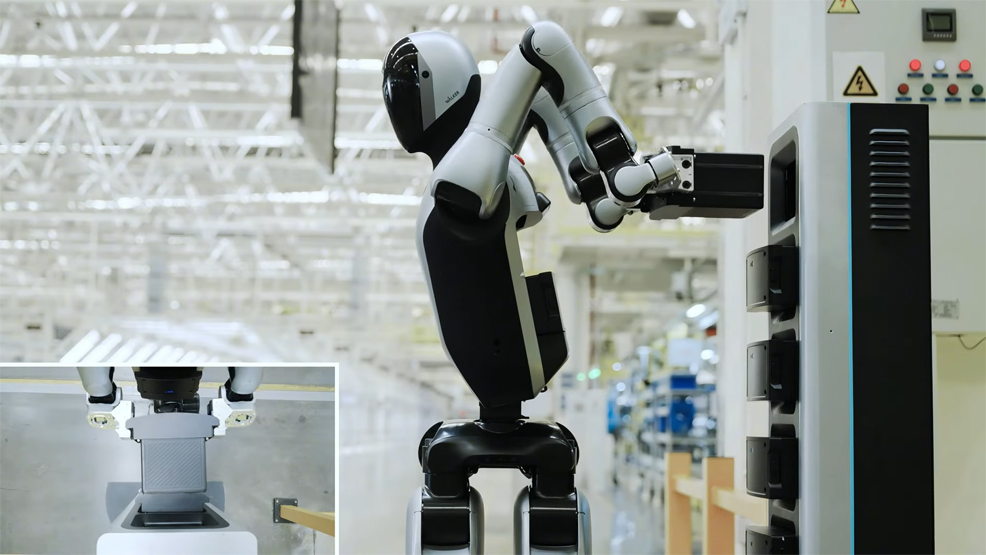
18th July 2025 Walker 2 becomes first android to swap its own battery Chinese company UBTECH has unveiled its new Walker 2 humanoid robot, capable of replacing its own battery in just three minutes – no human help needed.
UBTECH, a robotics manufacturer based in Shenzhen, China, has announced a milestone with its Walker 2 model (also called Walker S2), which builds on the success of its earlier Walker S1. This new version can walk over to a charging station, remove a depleted battery from its back, and then dock it for recharge. Once aligned at the dock, it picks up a fully charged pack and pops it back into its body before heading off again. The entire process can be completed in approximately three minutes – fully autonomously and without human help. This means the robot could theoretically operate around the clock, without ever needing to shut down. Walker S2 includes a dual-battery system that allows for hot-swapping and uninterrupted task execution. It can also independently decide when to swap or recharge based on task priorities, enabling dynamic energy management.
UBTECH aims to provide this feature in industrial settings where continuous uptime matters. With Walker 2, workers no longer have to pause production to swap batteries manually. That cuts downtime and maintenance costs, and boosts overall efficiency. This breakthrough marks a significant milestone for humanoid robots – hinting at a future where they can support a wide array of manufacturing, logistics, or inspection tasks with minimal human oversight. UBTECH went public on the Hong Kong Stock Exchange in late 2023, after raising HK$1 billion (US$127 million). The Walker S series, launched in October 2024, has since been deployed by 12 major companies – including BYD, Geely, and Foxconn – with orders for more than 500 units. Before now, the Walker S1 and its smaller brother – the more modestly-sized Walker S Lite – were active on automotive assembly lines and electronics manufacturing floors, but they still required the intervention of humans to recharge. By contrast, the brand-new Walker 2 clears that hurdle with true autonomy. In recent years, humanoid robots have increasingly shifted from experimental labs into reliable partners on the factory floor. As UBTECH and others push ahead, expect to see more of these machines managing power, tools, and inventory by themselves – 24/7.
Comments »
If you enjoyed this article, please consider sharing it:
|
||||||







